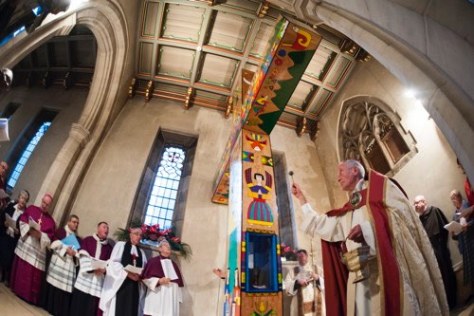
With the approach of Advent we can soon start to follow in real time the weeks before the murder of Thomas Becket 850 years ago.
At the start of December the Archbishop of Canterbury Thomas Becket returned to from exile in France by landing at Sandwich in his diocese.
His ride into Canterbury through cheering crowds was compared to Christ on Palm Sunday.
The following week, Becket set off for Southwark. Although it was winter with short daylight hours, he managed to ride in a day.
A brief confirmation service at Newington near Sittingbourne took place by the main road saving the archbishop from having to turn off to the church which lies to the north.
The 850th anniversary of Becket’s visit to Southwark Cathedral (called Southwark Priory in 1170) is being marked during Choral Evensong on Friday 11 December when the saint’s successor Justin Welby will preach.
Representatives from nearby St George’s Roman Catholic Cathedral Southwark will be present. The Dean of Canterbury, the Very Revd Robert Willis, is coming up the PW for the occasion.
Flickering before the altar will be a candle made to the height of St Thomas Becket and another the exact height of Marion Marples who promoted the Santiago pilgrimage and, just before her unexpected death last year, helped to prepare the reawakening of the PW for this anniversary year.
Becket spent at least the first night of his visit in the house near to the cathedral which is now the familiar preserved ruin in Clink Street.
After about a week, having gone to Harrow and been snubbed by Henry II’s courtiers, Becket returned home. That journey took two days and after Dartford was by way of the Darenth Valley and Otford with an overnight stop at Wrotham.
This is the route we follow today from Southwark to Canterbury.
**The service will be streamed live on the Southwark Cathedral website. Those wishing to be present should register via Eventbrite.














